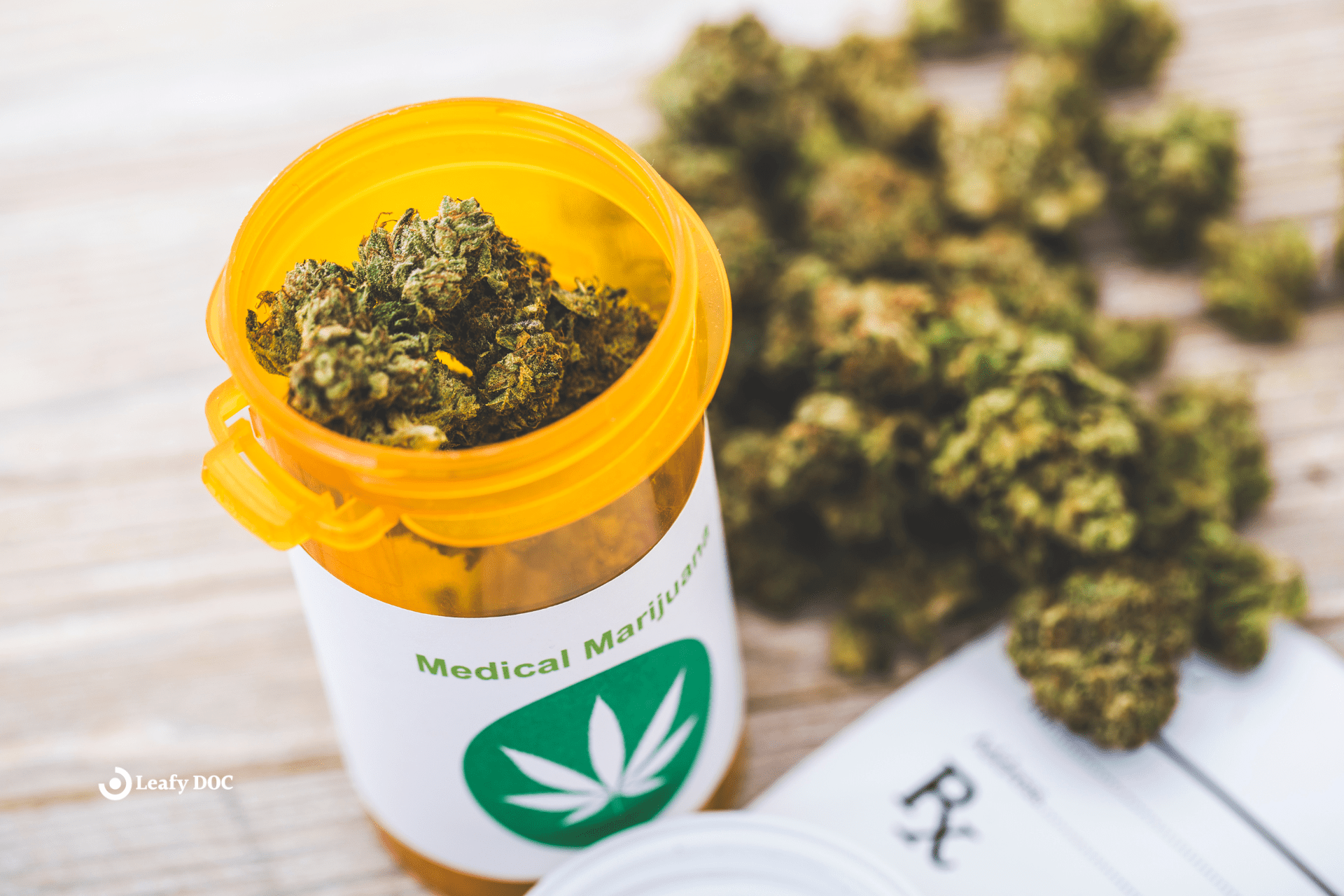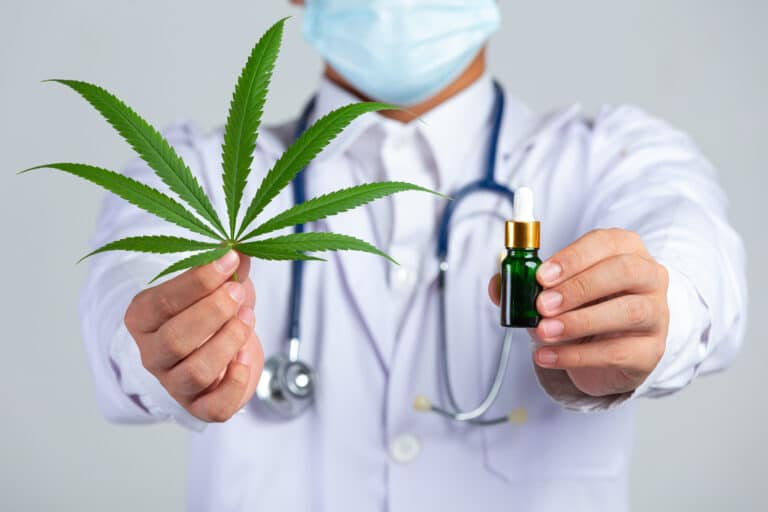Dispelling the Top 7 Myths About Medical Marijuana
by Haley Mills · June 1, 2023
Separate fact from fiction with our guide to the top 5 myths about medical marijuana. Learn the truth about cannabis and its potential benefits and drawbacks.

As the tide of public opinion shifts in favor of medical marijuana, it’s crucial to separate fact from fiction to make informed decisions about its use. With numerous misconceptions floating around, understanding this natural medicine’s benefits and potential drawbacks can be pretty challenging.
In this article, we will tackle the top seven marijuana myths surrounding medical marijuana, shedding light on the reality behind its therapeutic potential and addressing some common concerns that still linger in many. Through a comprehensive exploration of the evidence, we aim to provide clarity and encourage informed conversations around this increasingly popular treatment option.
Myth #1: medical marijuana is a foreign substance in the body.
Contrary to the myth that medical marijuana is a foreign substance in the body, it is essential to understand that its active compounds, cannabinoids, have a natural affinity for our biological systems. This connection is facilitated by a complex cell-signaling system known as the endocannabinoid system (ECS), which plays a crucial role in maintaining the body’s homeostasis.
The ECS consists of three primary components: endocannabinoids, receptors, and enzymes. Endocannabinoids are naturally produced compounds that are structurally similar to the cannabinoids found in marijuana, such as THC and CBD. The two primary endocannabinoids are anandamide and 2-arachidonoylglycerol (2-AG). These endocannabinoids bind to specific receptors, mainly CB1 and CB2, found throughout the body. Enzymes are then responsible for breaking down endocannabinoids once they have fulfilled their purpose.
When medical marijuana is introduced into the body, its cannabinoids interact with the ECS, like endocannabinoids. THC, for example, has a strong affinity for CB1 receptors, primarily found in the brain and central nervous system. At the same time, CBD interacts with both CB1 and CB2 receptors, which are more prevalent in the immune system and peripheral tissues. This interaction allows medical marijuana to have various therapeutic effects, including pain relief, anti-inflammatory properties, and neuroprotection.
Myth #2: Medical Cannabis Use Leads to using other drugs.
The idea that medical cannabis use inevitably leads to the use of other drugs, often referred to as the “gateway drug” theory, is largely unsupported by scientific evidence. While some individuals who consume cannabis may also use other illicit drugs, correlation does not imply causation. When examining substance use patterns, it is essential to consider various factors, such as genetics, environment, and social influences that influence drug and alcohol dependence and marijuana addiction.
Multiple studies have investigated this issue, and the consensus among researchers is that cannabis use does not directly cause the use of other drugs. A 2017 report by the National Academies of Sciences, Engineering, and Medicine concluded that no substantial evidence supports the claim that cannabis use increases the likelihood of initiating the use of other substances.
Furthermore, medical cannabis is prescribed by healthcare professionals for specific ailments, with dosing and administration methods tailored to the patient’s condition. This controlled approach to consumption significantly reduces the risk of abuse or progression to other substances.
Myth #3: All Cannabis products Get You High.
The belief that all cannabis products get you high is a common misconception stemming from a lack of understanding of the plant’s chemical composition. Cannabis contains over 100 cannabinoids, with THC (tetrahydrocannabinol) and CBD (cannabidiol) being the most prominent. THC is primarily responsible for the psychoactive effects or the “high” associated with cannabis use.
However, not all cannabis products have high THC content. Many medical cannabis products are formulated with higher concentrations of non-psychoactive CBD, which offers numerous therapeutic benefits without inducing the high. CBD has been studied extensively for its potential to alleviate symptoms associated with various health conditions, such as epilepsy, chronic pain, and anxiety.
Moreover, certain cannabis strains are specifically bred to contain low levels of THC and higher levels of CBD or other non-psychoactive cannabinoids. These strains are primarily used for medical purposes and do not produce the intoxicating effects commonly associated with recreational cannabis use.
Myth #4: All cannabis strain has the same effects on everyone.
The claim that all cannabis strains have the same effects on everyone is far from accurate. Cannabis plants are genetically diverse, with each strain possessing a unique combination of cannabinoids, terpenes, and other compounds. These variations result in distinct therapeutic effects, aroma, and flavor profiles.
Two primary categories of cannabis strains are indica and sativa, with hybrid strains combining traits from both. Indica strains tend to produce more relaxing and sedating effects, while sativa strains are known for their uplifting and energizing properties. The specific effects of each strain depend on the individual’s unique body chemistry, genetics, tolerance, and method of consumption.
Some non-psychoactive strains, high in CBD and low in THC, include Charlotte’s Web, ACDC, and Harlequin. These strains are favored for their therapeutic benefits without inducing the intoxicating effects associated with THC.
Myth #5: Medical cannabis has no health benefits.
The assertion that medical cannabis has no health benefits is contradicted by extensive research highlighting its therapeutic potential for various health conditions. The cannabinoids, primarily THC and CBD, interact with the body’s endocannabinoid system to modulate various physiological processes, including pain, inflammation, mood, and sleep.
Some specific health conditions that medical marijuana can potentially benefit include:
- Chronic pain: Numerous studies have demonstrated the effectiveness of medical cannabis in reducing chronic pain, including neuropathic pain, fibromyalgia, and arthritis.
- Epilepsy: CBD has shown promise in treating rare forms of pediatric epilepsy, such as Dravet syndrome and Lennox-Gastaut syndrome. The FDA has approved Epidiolex, a CBD-based medication, for these conditions and other seizure disorders.
- Multiple sclerosis: Medical cannabis has been found to alleviate muscle spasticity, pain, and sleep disturbances in multiple sclerosis patients who consume marijuana.
- Nausea and vomiting: THC-based medications, such as dronabinol and nabilone, have been approved by the FDA to treat chemotherapy-induced nausea and vomiting.
- Anxiety and depression: Some strains of medical cannabis, particularly those high in CBD, have demonstrated anxiolytic and antidepressant properties and help with certain mental disorders.
Medical or recreational marijuana is not a one-size-fits-all treatment, and its efficacy varies among individuals. However, the evidence supporting its therapeutic benefits for specific health conditions is well-established, and ongoing research continues to uncover new potential applications.
Myth #6: Marijuana Prohibition protects society.
The belief that marijuana prohibition protects society, particularly children, is not supported by evidence. In fact, prohibition has several unintended consequences that may pose more significant risks to public health and safety.
Firstly, prohibition can create an illicit market that lacks regulation and quality control, leading to the distribution of potentially dangerous products. Consumers, including adolescents, may unknowingly purchase contaminated or adulterated marijuana, risking their health.
Moreover, marijuana prohibition has not effectively reduced youth access to the substance. According to a study published in JAMA Pediatrics in 2019, marijuana use among teenagers decreased in states where recreational marijuana was legalized. Regulating and controlling the market can help limit youth access by implementing age restrictions and enforcing penalties for selling to minors.
Marijuana prohibition disproportionately impacts marginalized communities, leading to social and economic disparities. The enforcement of prohibition often results in arrests and criminal records, which can have long-lasting effects on employment, housing, and other aspects of life.
Myth #7: The only way to use medical marijuana is by smoking it.
The misconception that medical marijuana can only be consumed through smoking overlooks the diverse range of current consumption methods. While marijuana smoke may be healthier than tobacco smoke, it’s still not an option for many MMJ patients with lung cancer or other debilitating illnesses. Smoking is just one of many options, and patients can choose from several alternatives that offer different experiences, onset times, and durations of effects.
- Vaporization: Vaporizers heat cannabis to a temperature that releases the active compounds without combustion, reducing the production of harmful byproducts. This method offers a similar experience to smoking but is considered less harmful to the lungs.
- Edibles: Cannabis-infused foods and beverages provide a discreet and smoke-free way to consume medical marijuana. The effects of edibles take longer to onset but generally last longer than inhaled methods.
- Tinctures: These liquid cannabis extracts are typically administered under the tongue or mixed with food and beverages. Tinctures allow for precise dosing and have a faster onset than edibles.
- Topicals: Cannabis-infused creams, balms, and lotions can be applied directly to the skin for localized relief of pain and inflammation without producing psychoactive effects.
- Transdermal patches: These adhesive patches deliver a steady dose of cannabinoids through the skin and into the bloodstream, providing long-lasting relief for various conditions.
Final Analysis of MMJ Common Myths
In conclusion, we have endeavored to debunk some of the most prevalent myths surrounding medical marijuana use, revealing the truth behind its medicinal value, safety, and legal status. We hope to contribute to a more nuanced and educated discourse by dispelling these misconceptions. As the use of medical marijuana continues to expand, it is essential for individuals and healthcare providers alike to stay informed about its potential benefits and limitations.
Armed with accurate information, patients can make better decisions about their treatment options, and society can move towards embracing this promising therapeutic alternative with a greater sense of understanding, responsibility, and knowledge of the cannabis industry and the potential benefits of the whole cannabis plant.
Last Updated: August 8, 2024
Get Approved for Your Medical Marijuana Card in Minutes!

Get Your Medical Card
Connect with a licensed physician online in minutes

Like This Article?
Share with your friends
Table of Contents
Keep Reading
-
Exploring Careers In The Cannabis Industry
Discover exciting career opportunities in the cannabis industry and unlock your full potential today. Explore the endless possibilities waiting for you in this booming field. Click now to kickstart your journey towards a rewarding career in Cannabis Industry Careers!
-
Discover The Most Popular Relaxing Cannabis Strains
Relax and indulge in the most popular cannabis strains for ultimate tranquility. Discover the soothing power of these top choices and take a well-deserved break. Click here to find your perfect relaxation companion now!
-
Medical Marijuanas Statistics
Medical marijuana is a hot topic with a lot of debate surrounding it. Get the facts with our medical marijuana statistics page.



